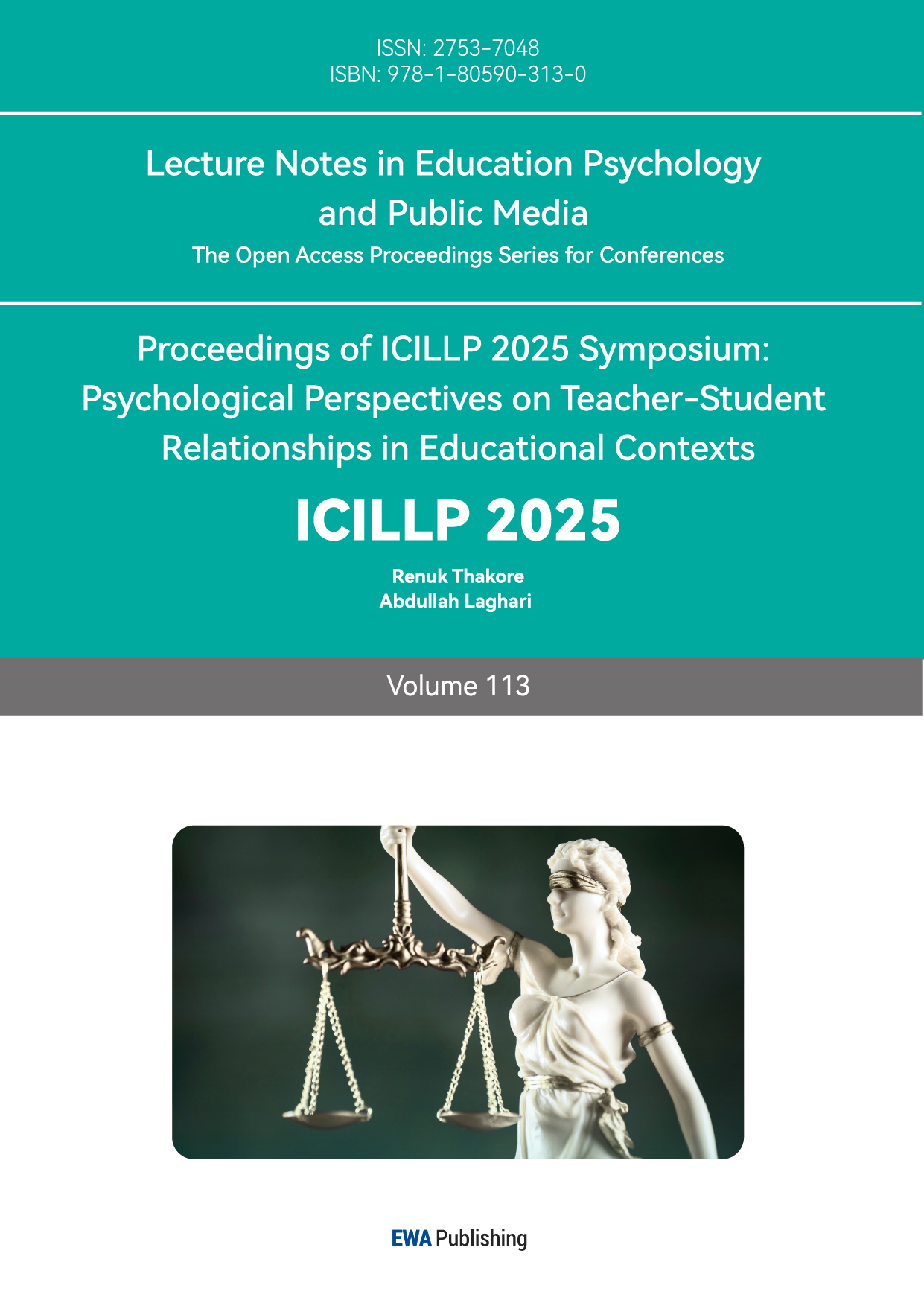References
[1]. Mulvey, L. (1975). Visual pleasure and narrative cinema. Screen, 16(3): 6–18.
[2]. Shaofang Zou. (2023). Gaze and counter-gaze: Female narratives in Park Chan-wook’s films. Contemporary Cinema.
[3]. Hooks, B. (2003). The oppositional gaze: Black female spectators. In A. Jones (Ed.) The feminism and visual culture reader. Routledge, pp.94-105.
[4]. Foucault, M. (1995). Discipline and punish: The birth of the prison (A. Sheridan, Trans.). Vintage Books.
[5]. Jie Chen. (2024). Decision to Leave: A contemporary interpretation of Nora’s departure. Film Criticism, (419): 88–91.
[6]. Zhiyun Yang, Zhiqiang Ren. (2024). The ambiguity and its narrative elements in Decision to Leave. Journal of Korean-Chinese Cultural Studies, 84: 441-461.
[7]. Sartre, J.P. (1989). No Exit and Three Other Plays (S. Gilbert, Trans.). Vintage International.
[8]. de Lauretis, T. (1987). Technologies of gender: Essays on theory, film, and fiction. Indiana University Press.
[9]. Kaplan, E. A. (1983). Women and film: Both sides of the camera. Routledge.
[10]. de Beauvoir, S. (1949). The Second Sex. Paris: Gallimard.
[11]. Tania Modleski (2005). The Women Who Knew Too Much: Hitchcock and Feminist Theory. Routledge.



